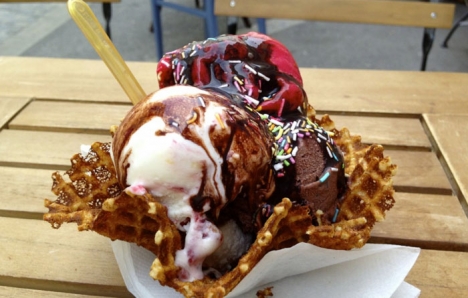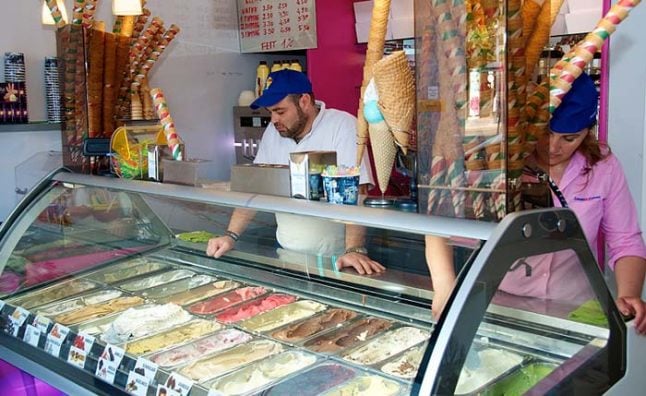After being asked, “What flavour of gelato would you like?” my experience with frozen desserts changed forever.
Walking around Vienna, one is bombarded with an excess of ice cream parlours and pastry shops.
The calories and sugar are endless, as is the choice – from the apple streusel cake served at bakery Der Mann to a triple scoop of double fudge chunk gelato from the Zanoni and Zanoni ice cream bar.
The flavours and choices are endless. The only challenging part of the delicious experience is choosing what flavour or pastry you will indulge in.
Walking in the First District, near Saint Stephens cathedral, I passed an ice cream cafe that even offered dairy-free sundaes suitable for the lactose intolerant, or vegans.
The creamery had a line of sugar-deprived people circling the building. After waiting 15 minutes for a scoop, I came face to face with the window holding the delicious treats.
I stared at the endless row of flavours and failed to make a decision. I did the only logical thing and asked the smiling man who was waiting to serve me for his suggestion. We decided on the Tiramisu gelato.
Upon taking a lick of the creamy treat, the first thought I had was, how can I pack this to take back home?
The man who had helped me decide what to have knew the exact questions to ask to narrow my choices down to a select few flavours.
“I learned to categorize the flavours into four sections. One for chocolate lovers. One for fruit lovers. One for customers with a sweet tooth. And one for the adventurous,” said Felix, an employee at Zanoni & Zanoni on Graben.
Felix has been working there for 12 years and has perfected the art of assisting indecisive customers with choosing a flavour.
“I first ask them their favourite candy. If it is chocolate, they are chocolate lovers. If it is a sweet or sour candy, they fall into the sweet tooth category,” he told me.
“Every Sunday my father would take my brothers and me to get a scoop of gelato. It was what I looked forward to every weekend and I have carried on the tradition with my own children,” Felix said.
“I hope I can make someone’s day a little better after a visit to the Gelateria.”
Conclusion to the day
Originating from Italy, gelato has become a summer tradition for many Viennese. Vienna is said to have the most ice-cream bars in Europe – and most of them are run by the descendants of Italian immigrants.
People can be seen all over the city holding a cone piled sky-high with gelato – and for many it’s a daily treat.
After speaking with an Italian tourist, I found out one of the reasons why gelato is so good. Gelato contains less air – making it richer than American ice cream. It also uses natural flavours and has less calories and butter fat.
“Gelato is the conclusion to the day. You have to end a good day the right way,” said Petride, an Italian on holiday in Vienna.
Gelato is a classic dessert generally eaten after dinner in Italy, and thought to cleanse the palette. It is a way to wind down the day and relax with friends and family.
And happily, Vienna has adopted this tradition as well. Gelato can be found in numerous cafés and bakeries, as well as ice cream parlours.
There are variations on how you can enjoy the satisfying treat, ranging from towering sundaes to a simple scoop.
For me it will always be a memorable experience from my time in Vienna.

Hungry yet? Photo: ireallytakethecake.com



 Please whitelist us to continue reading.
Please whitelist us to continue reading.
Member comments